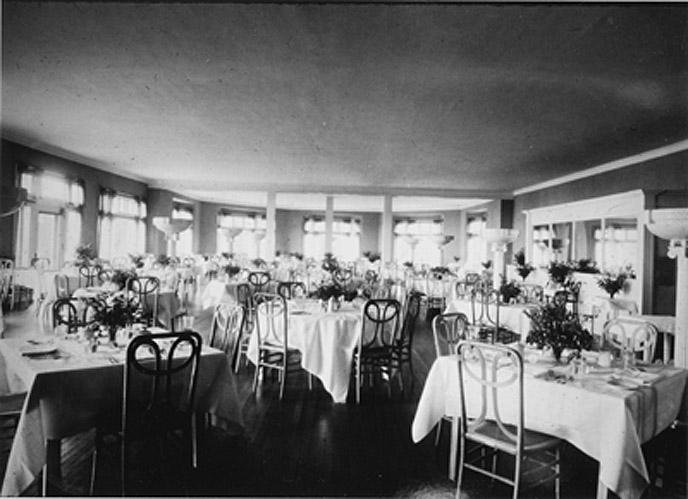Over the next five days, hundreds of employees and guests became ill, sparking hysteria among many others. At least half of the park’s employees came down with the disease, such that guests complained about lack of service. Rangers succumbed. It had spread to Mammoth Hot Springs, ranger stations, Old Faithful, and West Thumb. Herma Albertson, at that time spending her summers in Yellowstone as a lecturer and later one of the first permanent female naturalists in Wyoming, was struck by the gastrointestinal illness and had to cancel a lecture. “Great number of people sick with intestinal flu epidemic,” she wrote. The Lake Hotel was scrubbed top to bottom, cookware inspected, water sources tested, and items removed from the menu as suspects of the possible food poisoning. Though most of the outbreak's victims recovered within 24 hours, the incident was enough to spark thorough investigations by local and federal officials.

YELL 122364 Lake Hotel Dining Room circa 1930
But the outbreak defied the best guesses of park medical staff, a medical officer from the United States Public Health Service, and Montana Public Health officials, as well as the Livestock Board, which tested the milk and ice cream originally suspected by Nurse Agnes A. Welch. No common food was eaten by those taken ill, neither did they drink from a single water source, or stay at the same hotel (or even at a hotel at all, as some were campers). All tests on water sources and food came back negative for causative agents, and the director of the lab that tested the Lake Hotel’s water called it “of excellent quality.” Even silver polish made with cyanide – the culprit in similar epidemics out east – was suspected but was not the polish used in the park. The best guess of the federal public health officer, a man who was later to become the Chief of the National Cancer Institute, was to chalk it up to "intestinal flu," a catch-all for gastrointestinal disorders. He noted that the disease was known to occur throughout the Northwest and appeared to be communicable.
In the end, the outbreak subsided as quickly as it had begun, with no hospitalizations and no serious effects. Park visitors resumed the enthusiastic exploration of “Wonderland.” The day after she had taken ill, Herma Albertson was back on the trail and had her largest lecture crowd to date. But the cause of the illness remained a mystery, since electron microscopy was in its infancy. From a public health perspective, the incident calls to mind recent outbreaks of norovirus on cruise ships, particularly with the speed with which the 1929 disease spread and its communicable nature amongst people sharing close quarters. It also echoes last year’s incidence of norovirus in Jackson, Wyoming. But where earlier medical professionals were forced to a best estimate of the outbreak's cause, modern investigators have advanced imaging equipment and genetic testing to determine the causes of similar outbreaks today. Yet the virus or bacteria of the 1929 outbreak may remain a mystery. Want to try your hand at a diagnosis? The records and correspondence documenting the outbreak are in the archival holdings of the Yellowstone Heritage and Research Center.
Sources: Outbreak correspondence and reports, Yellowstone Park Company records (MSC 019), Yellowstone Park Archives; Diary, Herma Albertson Baggley Papers (MSC 001).
